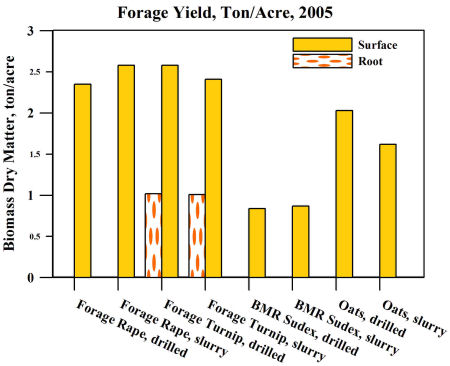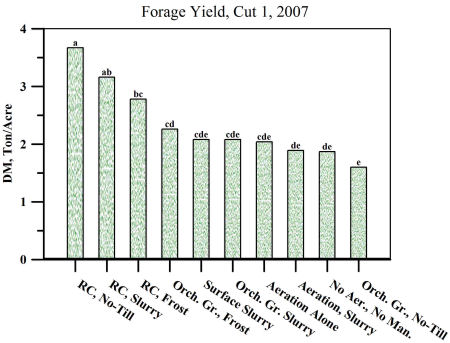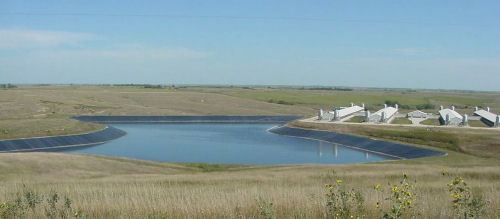
Research summaries are a brief description of current research being conducted throughout the country. If you would like to contribute information from your research, please post a comment with your contact information and we will get the form to you.
Printer friendly version of this summary.
Research Purpose
Dried black soldier fly (Hermetia illucens) prepupae contain 42% protein and 35% fat (Newton et al. 1977). Live prepupae are 44% dm and are easily dried for long term storage. As a component of a complete diet they have been found to support good growth of chicks (Hale 1973), swine (Newton 1977), rainbow trout (St-Hilaire et al. 2007)) and catfish (Newton et al. 2004). Peer reviewed studies show that prepupae meal can replace at least 25% of the fish meal in a diet with no reduction in gain or feed conversion ratio (FCR) in rainbow trout (St-Hilaire et al. 2007a) or channel catfish (Newton et al. 2004).
Separation of the prepupae fat and protein would allow for formulation of more balanced diets and produce a meal with over 60% protein. Removal of the chitin would further enhance the protein content and enhance digestibility as well as produce another valuable product. Blind taste tests with tilapia and channel catfish fed diets containing Hermetia larvae indicated no significant difference between those diets and commercial diets (Bondari & Sheppard. 1981).
Most experimental Hermetia prepupae production has been done with manure as a feedstock, but they have also been produced on grain based diets and other organic products such as waste food including meats and dairy products unacceptable for vermiculture. The addition of fish offal to manure has been shown to increase the omega-3 fatty acid content of prepupae to approximately 3% (St-Hilaire et al. 2007b).
Manure digestion has been extensively studied for its potential to reduce nutrient overloads near high density animal production. Hermetia larval digestion assimilates nearly 3/4 of the manure nutrients into Hermetia prepupal biomass, a high quality feedstuff. After larval digestion, the residual material can be used as a soil amendment or vermiculture media. The mature larvae form a prepupae which self-harvests. In addition, larval digestion of manure eliminates or reduces house fly production and noxious odors (Lorimor et al. 2001).
Food Safety and Bacteriological Considerations
Food safety and bacteriological considerations in using manure fed Hermetia prepupae are favorable. Hermetia larval activity significantly reduced E. coli 0157:H7 and Salmonella enterica in hen manure (Erickson et al. 2004). There is a substantial body of scientific literature on using various fly larvae (face fly, house fly, blow flies and the black soldier fly), reared in animal manure as animal feed.
Researchers in China, the USSR, the USA, Mexico, and Eastern Europe have fed these to poultry, swine, shrimp, several species of fish, turtles and frogs; with no reported health problems. Researchers in Chile have studied value recovery from swine manure producing house flies as a feedstuff. They reported finding anti-microbial factors in the house fly larvae. These natural antibiotics may reduce the chance of the feedstuff transmitting pathogens, and actually improve animal health, while reducing pathogen content in the digested manure that may be used to fertilize food crops.
Bacterial interactions of maggots in manure and in wound cleaning appear to be similar. The beneficial effect of maggots is very well studied and understood in medicine in the discipline of “maggot debridement therapy” (MDT). This life saving therapy is seeing more use with the increasing prevalence of drug resistant bacterial infections (Sherman and Wyle. 1996).
The sterile maggots used in this therapy are believed to enhance the healing of otherwise intractible wounds in several ways, the chief one being elimination of pyogenic bacteria. Kosta et al. (2001) reported progressively greater destruction of green fluorescent protein-producing E. coli as they progressed through the gut of sterile grown Lucilia sericata, a maggot commonly used in MDT. A similar antagonism seems to occur between Hermetia larvae (and other maggots) in manure.
Production Possibilities and Improvements to the System
In unrefined pilot-scale production systems with swine manure, 12-15% dry matter feed conversion rates (FCRdm) have been seen. In small laboratory bioassays, swine manure has been converted to prepupae at up to 24% FCRdm. Refining production systems may result in FCRdm of over 24%.
If Hermetia larvae digested all of the manure from the 40,000 feeder pigs (avg. wt = 155 lb) on a large swine farm and converted it into prepupae at a FCR of 16%, they would produce about 6,000 lb of dried prepupae each day. Extending this system to the approximately 67 million swine in the United States, about 5,000 tons of dried prepupae meal would be produced per day (1.8 million tons per year). At the same time manure nutrients that could cause environmental problems would be assimilated into a valuable feedstuff.
Hermetia culture as practiced to this point is admittedly crude and many improvements in efficiency can be made. The same is true for the raw insect product, the prepupae. The self-harvested prepupae can be separated into oil, protein meal and chitin to make much better use of these components. Prepupae meal production would probably cost less than fish meal production since Hermetia prepupae are 44% dry matter and fish are about 25% dry matter, predicting lower drying costs for Hermetia prepupae meal. Collection costs for Hermetia commercial scale operations are expected to be less than fish harvest by purse seining. It takes over one vessel-ton-week to harvest a metric ton of (25% dm) menhaden in the Gulf of Mexico (Gulf States Marine Fisheries Commission 2002 Menhaden Management Plan).
Environmental Problems Solved
Many environmental problems associated with manure storage and management will be solved by Hermetia prepupae production. In a typical field trial conducted in Georgia, Hermetia larval digestion of swine manure reduced nutrients as follows: N-71%, P-52%, K-52%, Al, B, Ca, Cd, Cr, Cu, Fe, Mg, Mn, Mo, Na, Ni, Pb, S., and Zn were reduced 38 to 93%.
In lab trials, noxious odors produced by decomposing manure were reduced or eliminated by Hermetia larval digestion. The gases in question were analyzed with chromatography associated with mass spectroscopy from headspace air in vials holding manure with and without larvae. The chemicals which were affected include the methylester of heptanoic acid, acetic acid, 2-furnaocarboxaldehyde, propanoic acid, butanoic acid, isovaleric acid, valeric acid, caproic acid and p-cresol. These were greatly reduced or eliminated by larval activity within 24 hours. Mature Hermetia prepupae self-harvest at 44% dm for the live product.
Producing prepupae meal will require much less energy (diesel) than capturing and drying 25% dm fish from the ocean. The enterprise of prepupae production from manure will give problematic manure a value, foster its better management and reduce the negative impact on the environment.
Aesthetic Considerations
There are some who will object to using manure fed insects as an aquaculture feedstuff even though all scientific evidence is positive. Those objecting on aesthetic principle should consider that organic vegetables (highly valued by many) are one trophic level removed from manure while fish fed on Hermetia prepupae are two tropic levels removed. Also consider that Hermetia larvae are known to reduce pathogens in manure and vegetables do not.
Summary
In relatively small scale trials, Hermetia illucens has been extensively studied for over 30 years as a potential feedstuff for fish and other food animals, showing success in almost all cases. For the sake of brevity, many very positive studies were omitted here. As outlined above, large quantities of this high quality feed could be produced and simultaneously solve other agricultural and environmental problems. A broadly supported research program into the production and utilization of Hermetia illucens prepupae as a fish meal substitute would have significant positive economic and environmental impact.
For More Information
Authors: G.L. Newton, D.C. Sheppard, and G.J. Burtle, University of Georgia
- Bondari, K., and D. C. Sheppard. 1981. Soldier fly larvae as feed in commercial fish production. Aquaculture. 24:103-109.
- Erickson, M. C., M. Islam, C. Sheppard, J. Liao, and M. P. Doyle. 2004. Reduction of Escherichia coli 0157:H7 and Salmonella enterica serovar Enteritidis in chicken manure by larvae of the black soldier fly. J. Food Protection. 67:685-690.
- Hale, O. M. 1973. Dried Hermetia illucens larvae (Stratiomyidae) as a feed additive for poultry. J. Ga. Entomol. Soc. 8:16-20.
- Lorimor, J., C. Fulhage, R. Zhang, T. Funk, R. Sheffield, D. C. Sheppard, G. L. Newton. 2006. Manure Management Strategies and Technologies. In: J. M. Rice, D. F. Caldwell, F. J. Humenik, eds. Animal and the Environment: National Center for Manure and Animal Waste Mangement White Ppaers. ASABE, St. Joseph, MI. P. 409-434.
- Kosta, Y. M., J. Miller, M. Mumcuoglu, M. Friger, and M. Tarshis. 2001. Destruction of bacteria in the digestive tract of the maggot of Lurilia sericata (Diptera: Calliphoridae). J. Med. Entomol. 38:161-166.
- Newton, G. L., C. V. Booram, R. W. Barker, and O. M. Hale. 1977. Dried Hermetia illucens larvae meal as a supplement for swine. J. Anim. Sci. 44:395-399.
- Newton, L., C. Sheppard, W. Watson, G. Burtle, and R. Dove. 2004. Using the black soldier fly, Hermetia illucens, as a value-added tool for the management of swine manure. Univ. Of Georgia, College of Agric. & Environ. Sci., Dept. Of Anim. & Dairy Sci. Annual Report.
- Sherman, R. A. And F. A. Wyle. 1996. Low-cost, low maintenance rearing of maggots in hospitals, clinics, and schools. Am. J. Trop. Med. Hyg. 54:38-41.
- St-Hilaire, S., C. Sheppard, J. K. Tomberlin, S. Irving, L. Newton, M. A. McGuire, E. E. Mosley, R. W. Hardy and W. Sealey. 2007a. Fly prepupae as a feedstuff for rainbow trout, Oncorhynchus mykiss. J. World Aquaculture Soc. 38:59-67.
- St-Hilaire, S., K. Cranfill, M. A. McGuire, E. E. Mosley, J. K. Tomberlin, L. Newton, W. Sealey, C. Sheppard, and S. Irvin. 2007b. Fish ofal recycling by the black soldier fly produces a foodstuff high in Omega-3 fatty acids. J. World Aquaculture Soc. 38:309-313.
This report was prepared for the 2008 annual meeting of the regional research committee, S-1032 “Animal Manure and Waste Utilization, Treatment and Nuisance Avoidance for a Sustainable Agriculture”. This report is not peer-reviewed and the author has sole responsibility for the content.









